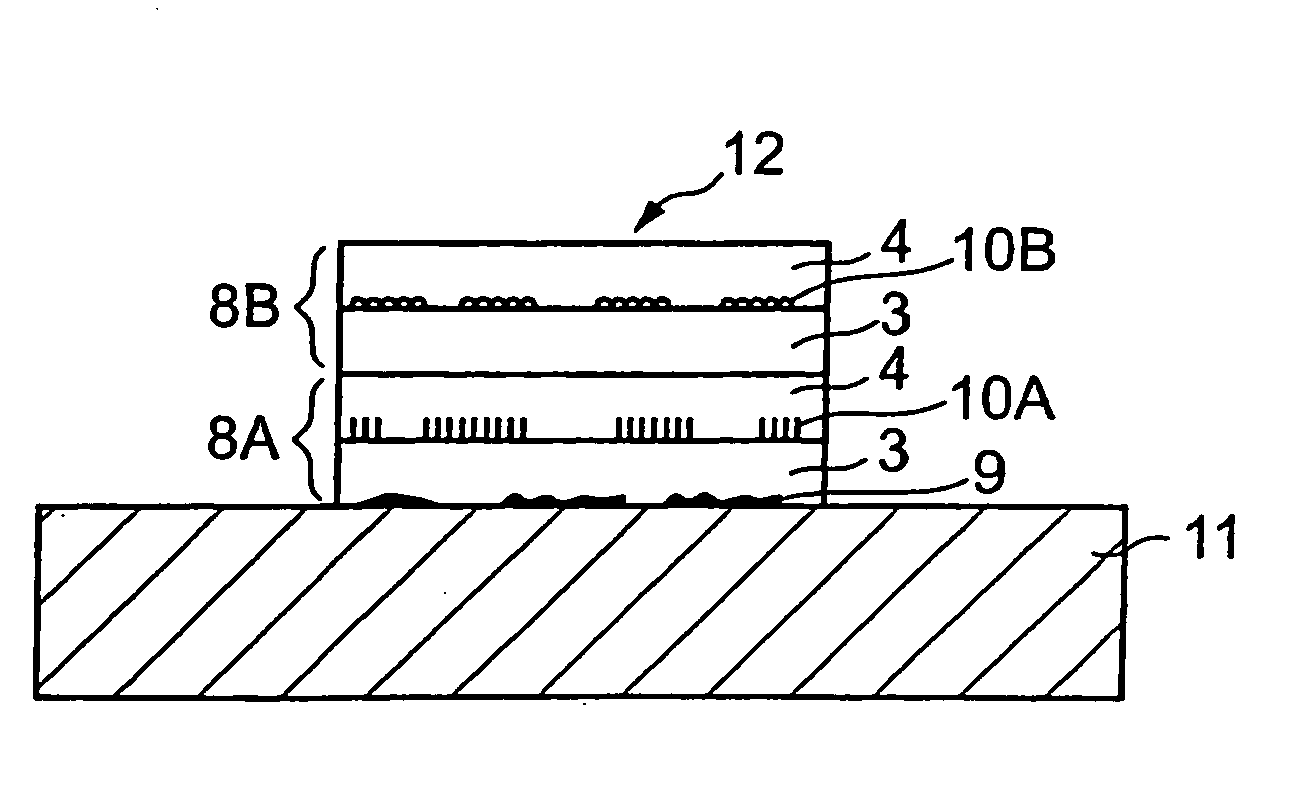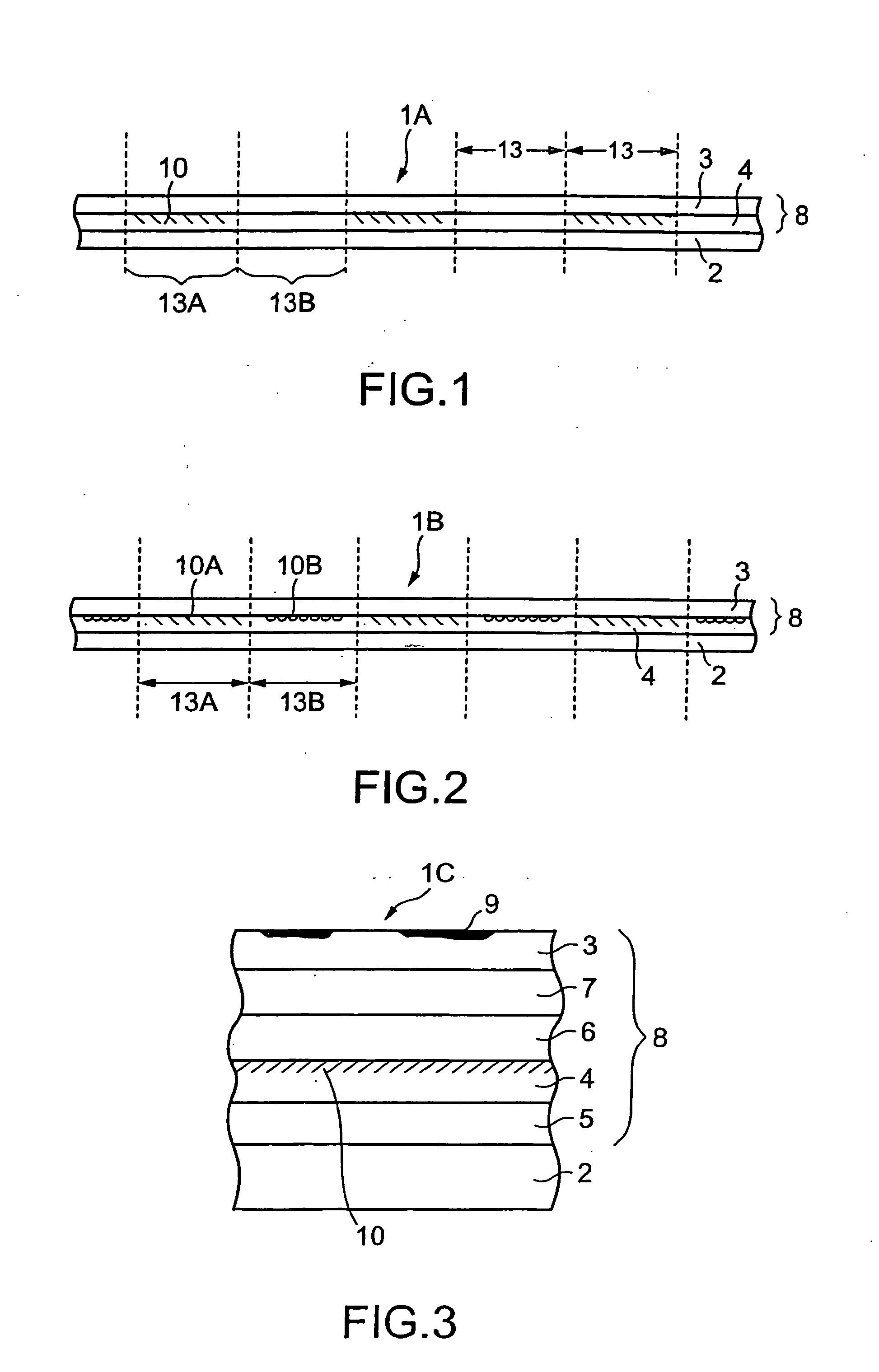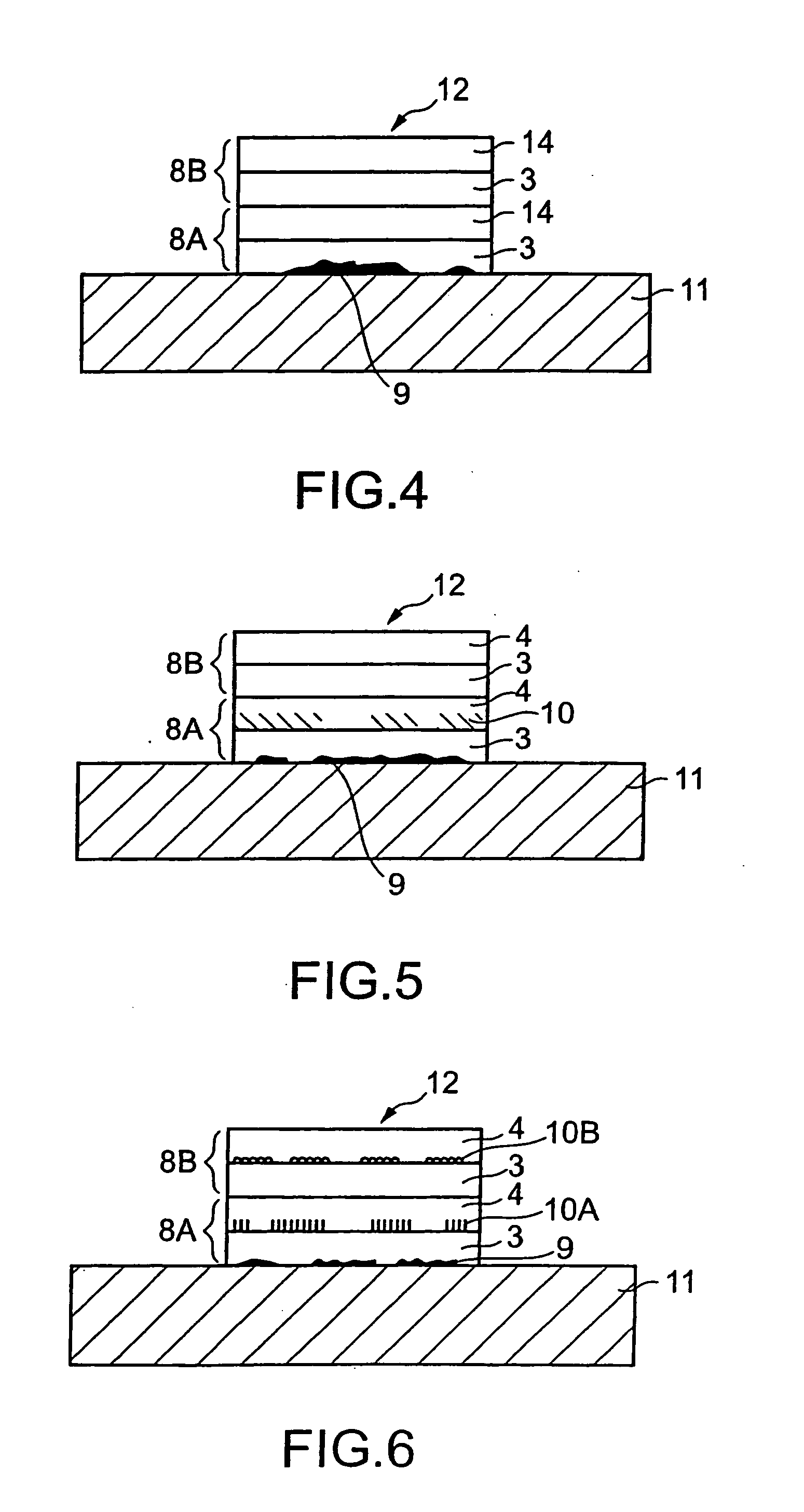Method for image formation and intermediate transfer recording medium
a technology of image formation and recording medium, applied in the direction of instruments, transportation and packaging, thermography, etc., can solve the problems of image damage, lightfastness and weathering resistance, when exposed to service conditions severe in terms of various fastness properties, and achieve excellent various fastness properties
- Summary
- Abstract
- Description
- Claims
- Application Information
AI Technical Summary
Benefits of technology
Problems solved by technology
Method used
Image
Examples
example 1
[0062]A 12 μm-thick transparent polyethylene terephthalate film was first provided as a substrate film. The following coating liquid for a peel layer was coated on the surface of the substrate film, and the coating was dried to form a 1.5 μm-thick peel layer on the substrate film.
(Coating liquid for peel layer)Acrylic resin40 partsPolyester resin 2 partsMethyl ethyl ketone50 partsToluene50 parts
[0063]An ultraviolet-curable acrylic resin (“Yupimer LZ 065 S,” manufactured by Mitsubishi Chemical Corporation) was then coated onto the peel layer by gravure reverse coating. The coating was exposed to ultraviolet light and was dried to form a 2.0 μm-thick hologram layer. A hologram pattern was formed in the hologram layer by providing an original plate having a concave / convex pattern of interference fringes of a hologram and forming fine concaves and convexes by embossing.
[0064]Further, a 500 angstrom-thick titanium oxide layer was vacuum deposited as a transparent vapor deposited layer on...
example 2
[0070]A peel layer, a hologram layer, a transparent vapor deposited layer, and a receptive layer were provided in that order on a substrate film in the same manner as in Example 1, except that the hologram image was formed as shown in FIG. 2, that is, two types of hologram images 10A and 10B were alternately and repeatedly provided in the transfer portions in the intermediate transfer recording medium as counted on the assumption that one image is set in one image plane.
[0071]Thus, an intermediate transfer recording medium of Example 2 was prepared.
[0072]An image was thermally transferred, on a receptive layer (image plane portion 13A) in the intermediate transfer recording medium, using a thermal transfer sheet comprising colorant layers of yellow, magenta, and cyan provided in a face serial manner.
[0073]Thereafter, a transfer portion 8A with the above image formed thereon was transferred onto a passport (an object) at its predetermined position.
[0074]Next, the intermediate transfe...
PUM
| Property | Measurement | Unit |
|---|---|---|
| density | aaaaa | aaaaa |
| energy | aaaaa | aaaaa |
| image density | aaaaa | aaaaa |
Abstract
Description
Claims
Application Information
 Login to View More
Login to View More - R&D
- Intellectual Property
- Life Sciences
- Materials
- Tech Scout
- Unparalleled Data Quality
- Higher Quality Content
- 60% Fewer Hallucinations
Browse by: Latest US Patents, China's latest patents, Technical Efficacy Thesaurus, Application Domain, Technology Topic, Popular Technical Reports.
© 2025 PatSnap. All rights reserved.Legal|Privacy policy|Modern Slavery Act Transparency Statement|Sitemap|About US| Contact US: help@patsnap.com



